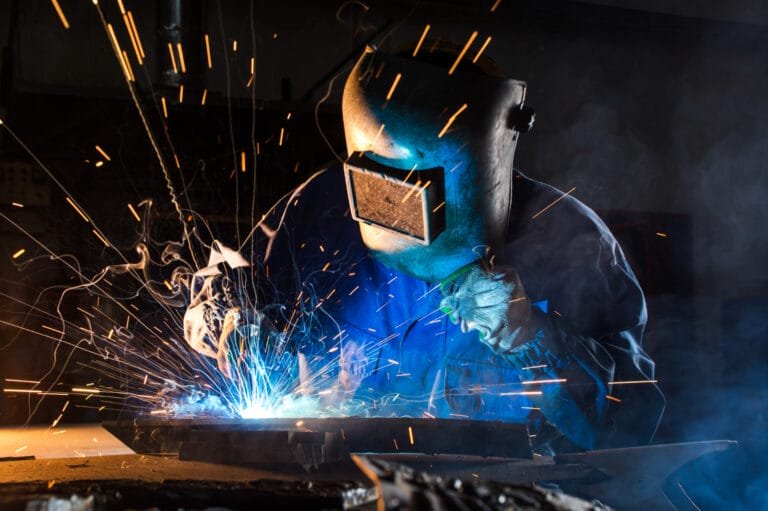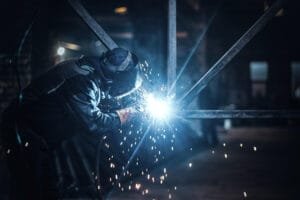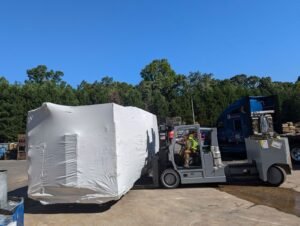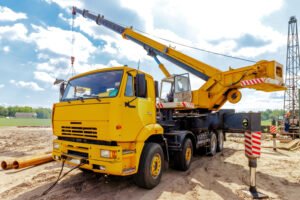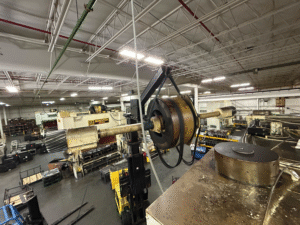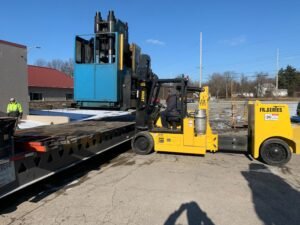Welding is a crucial process in the fabrication industry, enabling the construction of everything from small household items to massive infrastructure projects. This article delves into the various types of welding techniques used in fabrication, highlighting their applications, advantages, and challenges. By understanding these different methods, professionals in the field can make informed decisions about which technique best suits their specific needs.
Introduction to Welding in Fabrication
Welding is a process that involves joining materials, typically metals or thermoplastics, by causing coalescence. This is often done by melting the workpieces and adding a filler material to form a pool of molten material that cools to become a strong joint. Welding is essential in numerous industries, including construction, automotive, aerospace, and manufacturing.
Importance of Welding in Fabrication
- Structural Integrity: Welding provides strong, durable joints that are crucial for the structural integrity of fabricated products.
- Versatility: Welding can be used with a wide range of materials and in various environments, making it highly versatile.
- Efficiency: Modern welding techniques allow for quick and efficient fabrication processes, reducing production time and costs.
Types of Welding Techniques
There are several welding techniques used in fabrication, each with its unique characteristics and applications. The following sections explore these techniques in detail.
Shielded Metal Arc Welding (SMAW)
Also known as stick welding, SMAW is one of the most commonly used welding techniques. It uses an electric current to form an arc between the metal and a consumable electrode coated in flux.
Applications
- Construction of steel structures
- Repair and maintenance work
- Industrial fabrication
Advantages
- Simple and inexpensive equipment
- Versatile and can be used in various environments
- Effective for welding thicker materials
Challenges
- Requires a high level of skill and experience
- Slower than some other welding methods
- Produces slag that must be removed after welding
Gas Metal Arc Welding (GMAW/MIG)
Gas Metal Arc Welding, commonly known as MIG (Metal Inert Gas) welding, uses a continuous wire feed as an electrode and an inert gas to protect the weld pool from contamination.
Applications
- Automotive industry
- Fabrication of aluminum and other non-ferrous metals
- Manufacturing of metal products
Advantages
- High welding speed
- Produces clean welds with minimal spatter
- Easier to learn and use compared to SMAW
Challenges
- Requires an external gas supply
- Less effective outdoors due to wind dispersing the shielding gas
- Equipment can be more expensive
Flux-Cored Arc Welding (FCAW)
Flux-Cored Arc Welding is similar to GMAW but uses a tubular wire filled with flux instead of a solid wire. This can be used with or without an external shielding gas.
Applications
- Heavy equipment manufacturing
- Shipbuilding
- Construction projects
Advantages
- High deposition rate and welding spee
- Can be used in various positions
- Effective for thick materials
Challenges
- Produces more smoke and fumes than GMAW
- Requires more skill and training
- Equipment can be more expensive
Gas Tungsten Arc Welding (GTAW/TIG)
Gas Tungsten Arc Welding, also known as TIG (Tungsten Inert Gas) welding, uses a non-consumable tungsten electrode and an inert gas to shield the weld area.
Applications
- Aerospace industry
- Precision fabrication work
- Welding of thin materials
Advantages
- Produces high-quality, precise welds
- No spatter and minimal cleanup required
- Suitable for a wide range of metals
Challenges
- Slower and more complex process
- Requires high skill level and training
- More expensive equipment
Submerged Arc Welding (SAW)
Submerged Arc Welding involves forming an arc beneath a blanket of granular flux, which protects the weld pool from contamination and reduces spatter and fumes.
Applications
- Large-scale industrial fabrication
- Pipe and vessel construction
- Manufacturing of structural components
Advantages
- High deposition rates and efficiency
- Deep weld penetration
- Minimal arc visibility and spatter
Challenges
- Limited to flat or horizontal positions
- Requires more complex equipment and setup
- Not suitable for thin materials
Specialized Welding Techniques
Beyond the commonly used welding methods, there are several specialized techniques tailored for specific applications and materials.
Plasma Arc Welding (PAW)
Plasma Arc Welding is similar to GTAW but uses a constricted arc to create a more focused heat source, allowing for deeper penetration and faster welding speeds.
Applications
- Aerospace components
- Medical device manufacturing
- Precision welding applications
Advantages
- High precision and control
- Deep weld penetration
- Can be automated for increased efficiency
Challenges
- Complex and expensive equipment
- Requires specialized training and skills
- Limited to specific applications
Electron Beam Welding (EBW)
Electron Beam Welding uses a focused beam of high-velocity electrons to join materials. The kinetic energy of the electrons is transformed into heat upon impact, creating a precise and strong weld.
Applications
- Aerospace and automotive industries
- Nuclear reactor components
- High-precision welding tasks
Advantages
- Extremely high precision and control
- Minimal thermal distortion
- Suitable for a wide range of materials
Challenges
- Requires a vacuum environment
- Very expensive equipment
- Complex setup and operation
Laser Beam Welding (LBW)
Laser Beam Welding uses a concentrated laser beam to melt and join materials. It is highly precise and can be used for a variety of metals and thicknesses.
Applications
- Electronics manufacturing
- Automotive industry
- Medical devices
Advantages
- High precision and speed
- Minimal thermal distortion
- Can be automated for mass production
Challenges
- Expensive equipment and setup
- Requires specialized training
- Not suitable for all materials and thicknesses
Choosing the Right Welding Technique
Selecting the appropriate welding technique depends on various factors, including the materials involved, the required strength and precision of the weld, and the specific application. Here are some key considerations:
Material Type
Different materials require different welding techniques. For example:
- Steel:Suitable for SMAW, GMAW, FCAW, and SAW.
- Aluminum: Best welded with GMAW or GTAW.
- Titanium: Often requires GTAW or PAW for precision.
Thickness of Material
The thickness of the material plays a significant role in determining the welding technique:
- Thin Materials: Prefer GTAW or LBW for precision.
- Thick Materials: SMAW, FCAW, or SAW are more effective.
Welding Position
Certain welding techniques are better suited for specific positions:
- Flat and Horizontal: SAW and GMAW are ideal.
- Vertical and Overhead: SMAW and FCAW are more effective.
Production Volume
The volume of production can influence the choice of welding technique:
- High Volume: Automated processes like GMAW, PAW, or LBW are efficient.
- Low Volume: Manual techniques like SMAW or GTAW may be more practical.
Safety Considerations in Welding
Welding involves various hazards, including exposure to intense light, heat, and fumes. Implementing safety measures is crucial to protect workers and ensure a safe working environment.
Personal Protective Equipment (PPE)
- Welding Helmets: Protect against harmful UV and IR radiation.
- Gloves and Protective Clothing: Shield skin from sparks, heat, and molten metal.
- Respirators: Prevent inhalation of hazardous fumes and gases.
Ventilation and Fume Extraction
- Local Exhaust Ventilation: Captures fumes at the source to prevent inhalation.
- General Ventilation: Maintains air quality in the welding area.
Training and Certification
- Proper Training: Ensures welders are skilled in their techniques and aware of safety protocols.
- Certification: Validates the welder’s ability to perform specific welding tasks safely and effectively.
Future Trends in Welding Technology
The welding industry continues to evolve, driven by advancements in technology and increasing demands for efficiency and precision. Here are some emerging trends:
Automation and Robotics
- Robotic Welding: Enhances precision, speed, and consistency, particularly in high-volume production.
- Cobot Welding: Collaborative robots (cobots) work alongside humans to improve efficiency and safety.
Advanced Materials
- New Alloys: Development of advanced alloys requires specialized welding techniques.
- Composite Materials: Innovations in welding methods to join composite materials used in aerospace and automotive industries.
Smart Welding Systems
- IoT Integration: Smart welding systems monitor and optimize welding parameters in real-time.
- Data Analytics: Analyzing welding data to improve quality and reduce defects.
Sustainability
- Eco-Friendly Welding: Techniques and materials that reduce environmental impact.
- Energy Efficiency: Development of energy-efficient welding processes to lower production costs and carbon footprint.
Conclusion
Welding is a vital process in fabrication, with various techniques available to meet the diverse needs of different industries. Understanding the characteristics, applications, and challenges of each welding method enables professionals to choose the most suitable technique for their specific projects. As technology continues to advance, the welding industry is poised to see significant innovations that will further enhance efficiency, precision, and sustainability in fabrication.
